When I went to learn Spanish in Seville last month, I knew I would write about it afterward. What I didn’t know, is that I’d have so much more to talk about than the structure of the classes and how much I progressed. I didn’t know it would push me to redefine my life.
While I’d signed up for classes at the Spanish language institute Clic Sevilla and was dutifully present there every morning, I spent even more time meeting new people, wandering around the city and… getting to know myself a little better.
Let’s start at the beginning, shall we?
Contents
Looking for Spanish classes in Spain for adults on ESL
I think the best way to learn Spanish – or any language, for that matter, is by immersing yourself in it. There are plenty of schools that offer a Spanish class in Spanish (vs taught in your own language first) but I wanted a bit more than that.
I wanted to go and learn Spanish in Spain so that I’d have plenty of opportunities to practice outside of class as well.
When I was thinking about the things I really wanted to do at the beginning of this year, this was one of the first things that made it to the list. Now, I’m not a superstitious person, but people sometimes say you just have to send something into the universe and it’ll come back to you.
In this case, it did.
Just a week or two after I’d finished my list, I was contacted by ESL – Language Studies Abroad, asking me whether I’d be interested in working with them.
Hellooooooo, universe!
ESL is a language travel agency and a study abroad provider that offers a wide variety of language programs in more than 200 destinations worldwide, including several cities in Spain.
What they offer:
- gap year programs: internships, paid jobs, higher education, volunteer work, Spanish immersion programs of a year
- language courses for kids and teenagers
- business language programs
- language teacher training courses
- flexible language courses
That last option was exactly what I wanted to do. I just wanted to go to Spain for two random weeks and take classes while also being able to enjoy the city I’d be in. And I wanted that city to be Seville.
I’d been to Seville once many years ago, but only for an afternoon and on some sort of arranged excursion. It’d been a bit of a flop and so I wanted to go back to rediscover the city on my own.
Luckily for me, ESL partners with CLIC, a center for languages and cultural exchange with schools in Malaga, Cadiz and… Seville.
CLIC Sevilla Spanish language center
1. Course options
CLIC is a Spanish learning center in the center of Seville’s old town that both caters to Spanish people who want to learn a foreign language and foreigners who want to learn Spanish.
For the latter, they have the following options:
- an intensive Spanish course entirely adapted to your needs
- exam courses aimed at getting you a specific certification like DELE or business Spanish
- language and cultural courses for 50+
- Spanish summer school for teenagers
- private classes and group classes
- university credit programs
- medical Spanish classes
- some other, more individual programs
CLIC teaches Spanish for beginners, intermediates and advanced speakers. There are over 15 levels and if a level turns out to be too easy or too hard for you, you can just let the school know and change classes.
They have different options of intensive Spanish language courses depending on how many hours of class you want. You can do 20, 25 or 30 hours per week, with a class hour being 50 minutes.
I opted for 20 hours of intensive Spanish lessons for two weeks. Not because I wasn’t motivated, but because I honestly didn’t know how it would feel to be sitting in a classroom again. I’ve always loved learning, but I never really liked going to school.
I needn’t worry though, but more on that later. Let me first tell you a bit more about the structure of the classes, the progress I made and how attending CLIC doesn’t stop when the bell rings.
2. My history with learning Spanish
“Do you speak Spanish?”
Whenever I’d get that question, I responded hesitantly. I had taken a Spanish class in high school – which wasn’t that great but at least had given me some basics to work with – and I also studied Spanish Literature and Linguistics at university.
You think the latter would have made me a pro, but unfortunately, the Spanish I got at university was very theoretical and we barely had any Spanish conversation classes.
“Yes, I speak Spanish, but only a little.”
And so when I went to Seville, I did so with the goal of freshening up all that theoretical knowledge and actually learning conversational Spanish outside of a purely academic context.
So no, I didn’t need to learn Spanish in two weeks from scratch. That would have been a bit crazy. I already knew quite a few Spanish words and could coherently form Spanish phrases – though not always entirely correct ones. So what did I learn, and how?
3. The how and what of my Spanish immersion course
3.1. Determining your level and extracurricular activities
Before I left for Seville, I had to take an online test to determine my Spanish reading abilities. A conversation test followed the first day of school before my classes started. I had a little chat with someone from the staff and to my surprise, she told me she noticed I had a lot of Spanish hidden away in the back of my head and that it wouldn’t be too hard to get it to the front again.
While the staff decided in which class to put all the new students, we got a tour of the school (it has a cantine, a rooftop terrace, and a pool!) and were told about the cultural program.
Every weekday and Saturday, CLIC organizes an activity for its students. That could be a guided tour, a museum visit, a sports game, a flamenco night, a quiz or a movie screening. The idea is that you get an extra opportunity to speak Spanish while getting to know other students and learning a bit about Spanish culture and history.
Another option we had, was to take some extra Spanish classes with people who were training to become Spanish teachers. These classes were free, but I have to admit I never joined them as the urge to explore the city and enjoy the sun in the afternoons was just too big :-)
3.2. Structure of the classes
What I loved about CLIC is that you can start classes practically every Monday of the year and you can stay for as long as you like. You just have to enroll for a minimum of one week.
The intensive Spanish language classes at CLIC take place from Monday to Friday, from 9.15 a.m. to 1 p.m. (20-hour course), 2.20 p.m. (25 hours) or 3.10 p.m. (20 hours). We had a 20-minute break in between our two morning classes and those who stayed in the afternoon had a 30-minute lunch break as well.
Our classes always took place in the same classroom, but we had a different teacher before and after the break. This allowed us to experience different ways of teaching but also, and more importantly, made us listen to the two different ways in which these teachers spoke Spanish.
Now, we did learn Castilian Spanish or “Spanish Spanish” and not, for example, a South American variant of Spanish, but our teacher Helena spoke Spanish in a much more “neutral” way whereas our teacher Maria had a much thicker Andalucian accent.
Our Spanish lessons were diverse, focusing on Spanish vocabulary, grammar and conversation skills. Our teachers really put in the effort to come up with fun ways to learn Spanish. To learn Spanish words, for example, we didn’t go through a boring dictionary-like list, but instead worked with images, audio and speaking exercises during which we’d have to explain what we meant whenever we couldn’t find the word we were looking for.
To learn Spanish grammar, the process was similar, with a mix of audio, “fill the gap” exercises, and group conversations to put theory into practice.
And yes, we did get homework occasionally but it was always something that could be done in less than half an hour.
What I loved about the classes, was how much talking we did. There were question-and-answer exercises, role play, discussions to teach us how to express our opinions in Spanish… It was way different than the language classes I’d had in high school and my fear of not liking the whole school thing vanished after the first day.
As I said, the quickest way to learn fluent Spanish is by actually speaking it and in that respect, I’m super grateful for the people I ended up taking classes with. Which brings me to…
The people I met thanks to my Spanish course
While you do have to be 17+ to take the Spanish language course I took, I was a bit worried that most people in my class would be students who’d just finished high school and thus all much younger than me. Nothing wrong with that, but you’re just in a very different stage of life when you just got out of school than when you’ve already worked for a few years.
Again, my worries were ungrounded.
The first week, my class consisted of someone who’d just left high school, two university students, someone who’d just finished university, someone my age who started studying again after having worked before and three people a few years older than me.
The second week, our group was just as diverse. I met people from Japan, South Korea, Germany, the US and the UK.
Because CLIC focuses so much on interactive Spanish learning, we got to know each other quickly and as a result, also started hanging out after class. Instead of doing some work in the afternoons as I’d planned, I spent most of my free time in Seville eating out, sitting on sun-filled terraces and wandering through the city’s quaint little alleys – all while speaking Spanish! Well, most of the time ;-)
And I loved every minute of it.
While I knew I’d be writing about my experience learning Spanish in Spain, I also allowed myself to fully be in the moment. I didn’t take 100 photos of every possible thing I could write about. I didn’t spend my afternoons running around with a checklist of things I had to experience. And I didn’t stay up until well after midnight to answer emails – something that often happens when I’m traveling solo.
I didn’t sleep much in Seville though, but that was because of something else…
How attending a Spanish language school made me face myself
Brace yourself, this is the part where I get all introspective.
As a travel blogger, I love exploring new places, gathering new experiences and trying new things. I’ve traveled abroad 20 times this year and although it was sometimes physically tiring because I always have this massive list of things I want to do so that I can write about them, I’m usually fine mentally.
That’s because when I travel solo, I tend to travel fast. I’ll talk to the barista, chat with someone on the plane and offer another solo traveler to take their photo, but I rarely have long conversations with the people I meet on my trips.
It’s not that I don’t want to, but I guess it’s easier for me to just keep going – in everything I do. I struggle to hit pause and just be for a while. To reflect on things, immerse myself in the moment and ask myself whether I am where I need to be.
Seville changed that. It made me feel like I was exactly where I needed to be and I don’t think that would have happened had I not been there to study Spanish.
- Because of my classes, I didn’t feel like I needed to do anything else while I was there.
- Because of the way the classes were structured, I easily got to meet new people with whom I actually had the time to hang out.
- And because of my classes, I was motivated to go out and practice my Spanish, gathering so many new impressions in a language I grew more fluent in by the day.
All of these things kept me up at night. Not because they were bad, obviously, but because they finally made me stop and think.
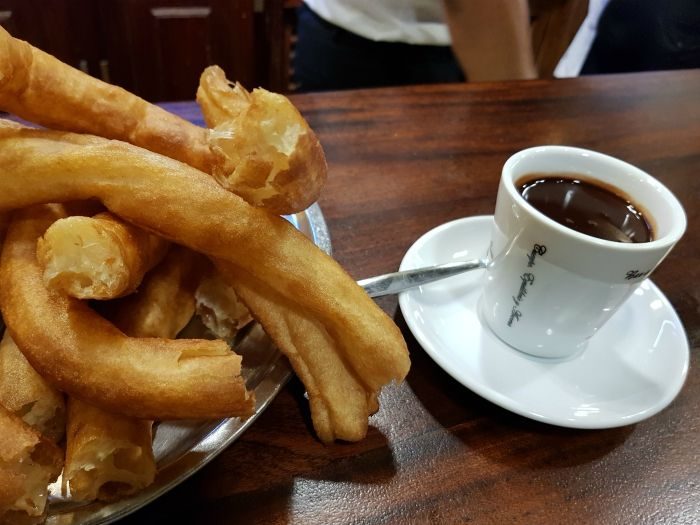
I think better when I’m not hungry
By taking the time to do something for myself, something that I’ve been wanting to do for a long time, I also opened myself up to others who were doing something for themselves. To their ways of traveling, their look at life, their thoughts, and their emotions.
And it flooded me with questions.
About how fast I’ve been going.
About how much I’ve been working and the things I’m missing out on because of that.
About where I want to take my life the following years.
I haven’t answered all of them yet, but I’m glad they got asked. I’m glad I let them be asked.
Even if you’d just spend a week taking Spanish courses in Seville, that would be a week of getting to know new people from different countries. A week to practice a language talking to locals, a week of exploring. You’d have plenty of new sights, scents, and tastes to process. Not to mention the number of new perspectives you’d get from all those people you’d meet.
Those things do something to a person. They did to me.
What it costs to learn Spanish in Seville
Now let’s get back to something practical, shall we?
A 20-hour course costs €195/week through ESL. This is just for your enrollment in the classes. You’ll need to buy a course book, which costs €20.
Aside from that, you’ll need to add on the cost of your accommodation and other expenses (food, excursions etc.). Be aware that if you book accommodation through the school, they’ll ask for a €150 cash deposit which you’ll get back at the end of your stay unless you’ve broken something and minus €40 for cleaning.
ESL offers language courses in Spain with accommodation and without. When you enroll in a course via ESL, you can opt to stay with a host family, in a shared residence or in a private studio or apartment and book your accommodation at the same time.
I spent one week in one of CLIC’s Santa Ana Studios and moved to a two-person apartment the second week when I had a friend visiting. Both places had excellent free WiFi and were located a 15-minute walk from the school.
You don’t have to book through the school, though. You can also get an Airbnb or arrange accommodation in another way.
Additional extras you can book are airport transfers and private classes. The bus from Seville Airport to the center is only €4 and takes half an hour without too much traffic and taxis run cheaper than a private transfer, so I’d go for one of those options.
Want to learn Spanish too?
I hope the above has given you a good idea of my experience learning Spanish in Spain with ESL. It was my first experience taking Spanish classes for adults in Spain, so I can’t say if I took the best Spanish language course there is or if taking classes like this is the easiest way to learn Spanish, the best way to learn Spanish or the fastest way to learn Spanish.
What I can say is that I loved the classes and felt more comfortable speaking Spanish after two weeks than I had held possible before traveling to Seville.
The teachers make it easy for students to get to know each other so it’s entirely up to you how much time you spend hanging out with the people you meet or spending your free time by yourself.
I truly believe that if you want to learn Spanish quickly – or any language, for that matter – you need to immerse yourself in it and what better way to do that than to spend time in a country where it’s spoken?
Don’t forget travel insurance
No matter whether you’re traveling just for fun, for work, to learn something or for all of that, the facts is that you can never plan for every circumstance (although I admit, I try). The thing is, unexpected things can happen and sometimes they’re not the things you hope for. Your luggage might get lost, you may get sick or break something while abroad or someone might steal your laptop. Whenever something like this happens, travel insurance has you covered.
I’ve had ongoing travel insurance ever since I started traveling to make sure I’m covered for every trip I go on but if you travel just a few times a year, you can get insured for each trip separately too.
Don’t have travel insurance yet? Check out SafetyWing. They offer super flexible plans that you can even sign up for while you’re already on your trip. On top of that, they were the first travel insurance to cover COVID, and when I got COVID, they reimbursed all of my expenses without making a fuss. Their customer support team is great and I can personally recommend them.
PIN FOR LATER
I was invited by ESL to take Spanish classes at CLIC in Seville so that I’d be able to write about my experience here on the blog. As always when I enter collaborations like this, what I write was and is entirely up to me.



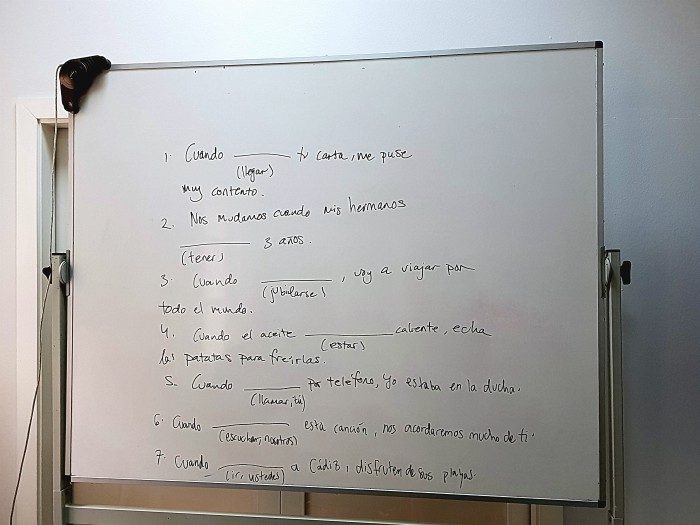
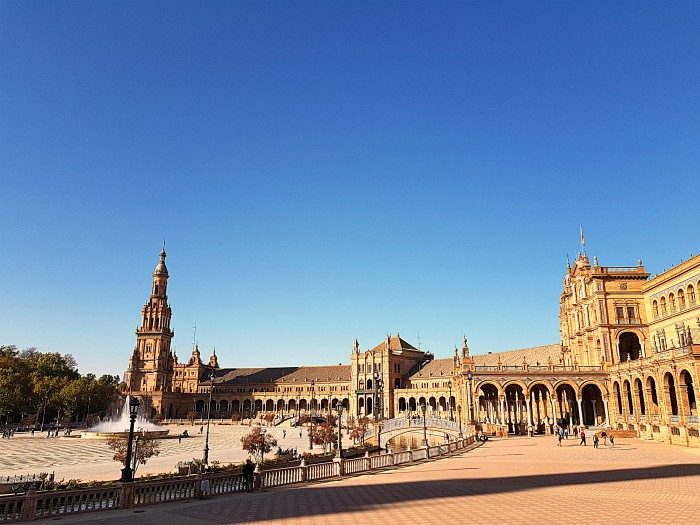
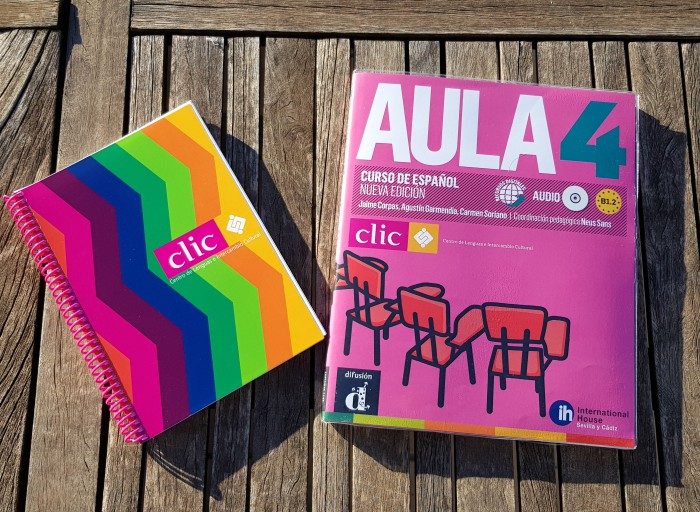
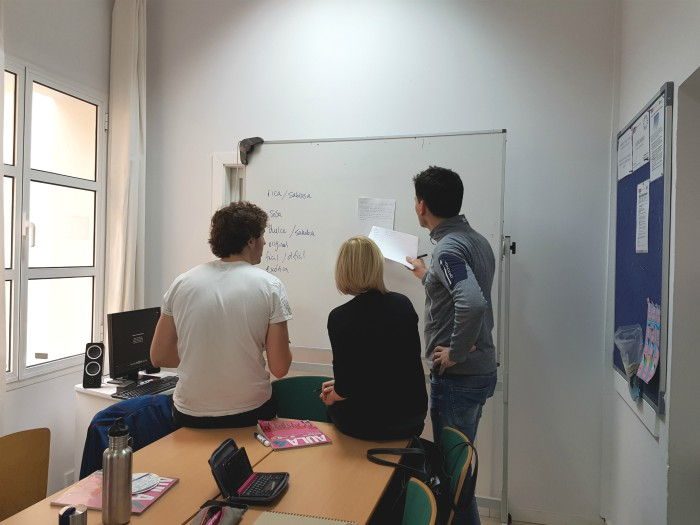
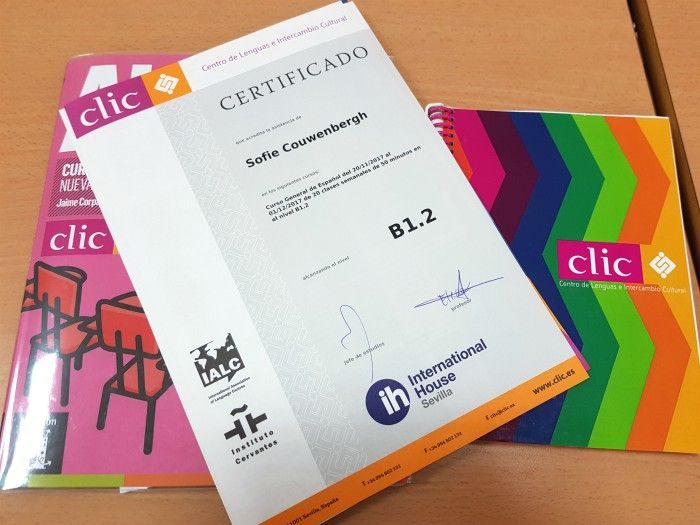
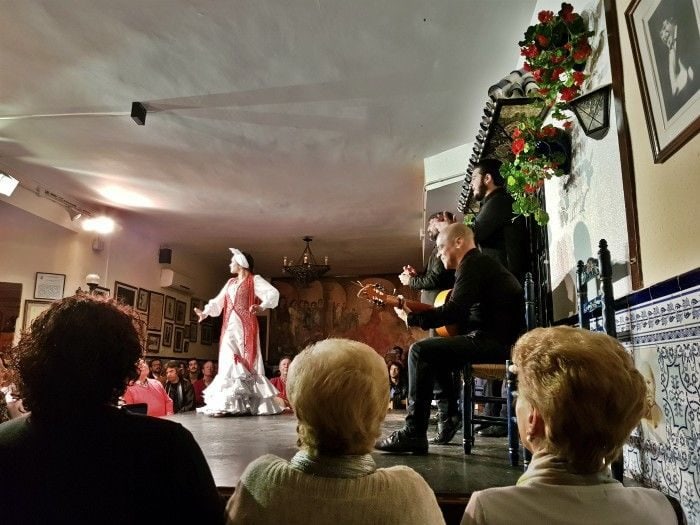
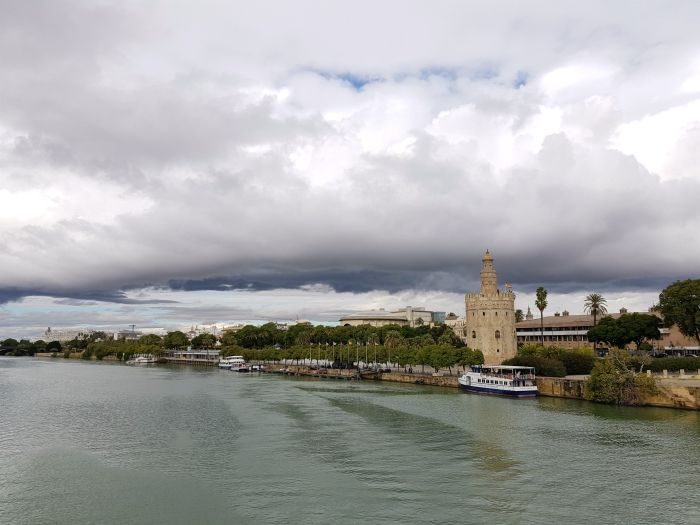
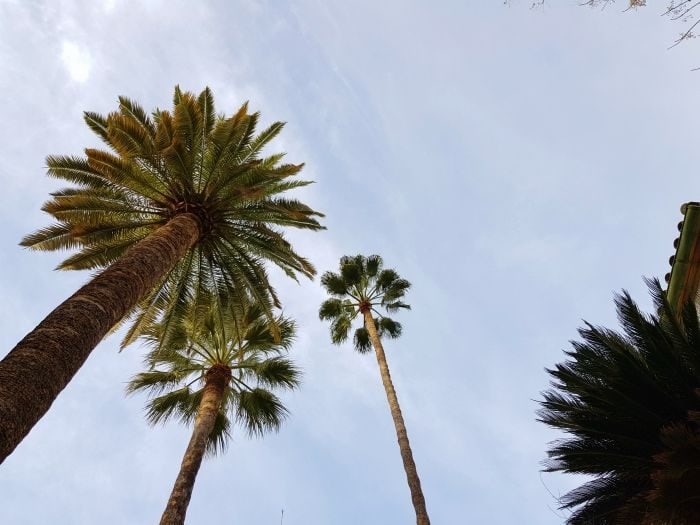
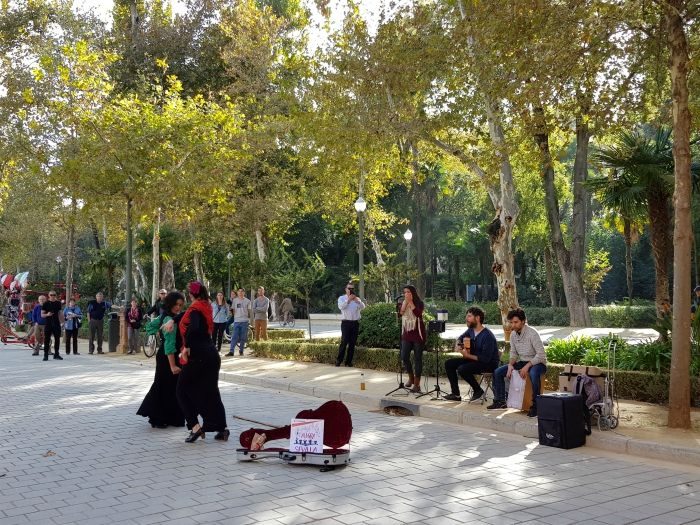
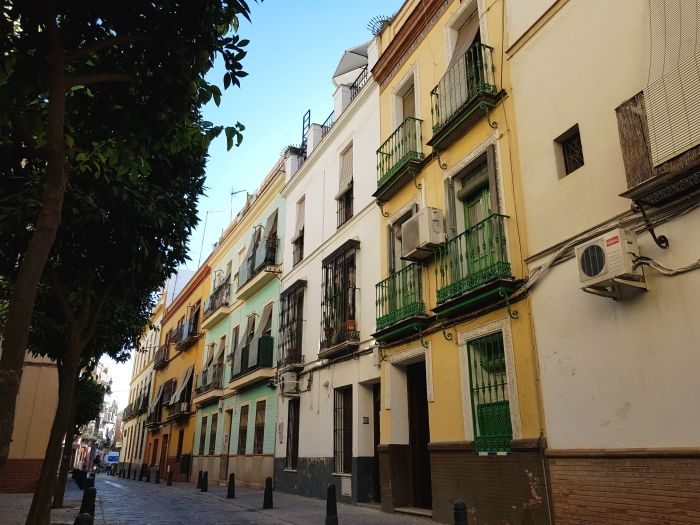
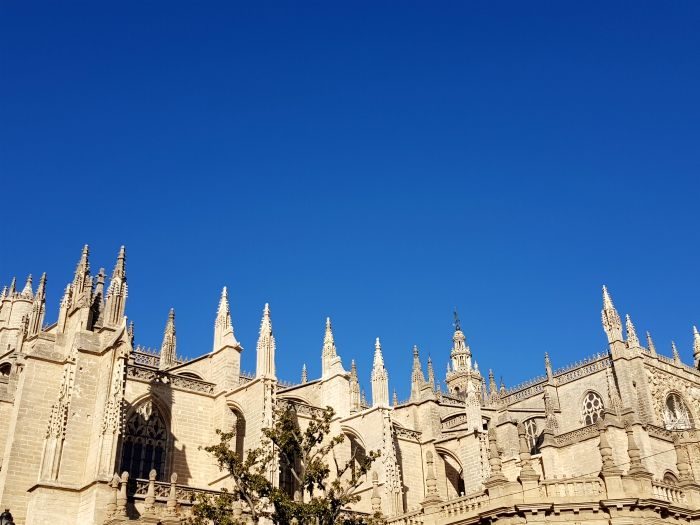
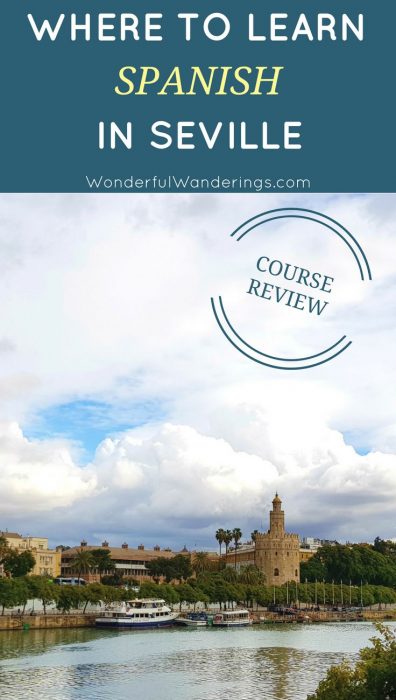
Eric says
Sounds like a great program. Thanks for sharing your experiences.
Sofie says
You’re very welcome, Eric :)
Berni says
Really enjoyed your article. I’m planning to go to Clic seville later this year in September for 2 weeks. Can I ask what month did you travel to Seville, and how did you find the weather whilst there?
Sofie says
Hey Berni,
I think you’ll have great weather in September. That’s still summer over there :) I went the end of November and while it was still nice during the day, it got pretty cold in the evenings.
Gabriel Lovatt-Sutton says
Hey, so I was wondering if you could give an idea on what level of Spanish you had going in, and what level you had going out…
Like before and after CLIC.
Thanks
Sofie says
Hey Gabriel,
Going in, I understood a lot and I could have a basic conversation but I had lost fluency, vocabulary, and some grammar.
After having taken the written and oral pre-test, they put me in B1.2. As I was only there for two weeks, I never took a test to go up a level.
I was comfortable in B1.2. My fluency and correct application of grammar improved a lot those two weeks but I wasn’t flawless yet.
Ashley says
Hi Sofie,
I am looking into the ESL intensive language program in Granada for possibly 6 weeks this summer. I have looked at a LOT of different programs but they were all over my budget ($5500 including flights, food, etc). To participate in pretty much the same program, it’s almost $2000 USD cheaper with ESL. This seems like a red flag to me that ESL might not be a legitimate program but your article makes me reconsider. Would you be able to tell me a little more about if you thought your experience was worth the money or things they might have left out to compensate for that cheaper price.
Thank you!
-Ashley
Sofie says
Hey Ashley,
I don’t know where you’re located but ESL is pretty known here in Belgium so I wouldn’t worry about that. They’re a huge company with offices in different countries.
I’m not sure if I can compare what I got to the program you’re looking to do as it seems to be different. Is this pricing you found to get everything organized by the school? I took their regular program (forgot the name but it’s in the post – I’m replying from the backend of the site right now) which is different from a summer intensive and stayed at one of their flats but took care of my own flights, food etc. So I just had my classes and accommodation, everything else I arranged by myself. Some of the extra-curricular are paid and some are free but this is indicated on the site as well I believe and you’re not obliged to participate in any. I only went to the Flamenco night with the school.
It might also be that summer programs (and flights) are more expensive as summer is high season for Spain. I went in November, which is during low season.
I would try to break the price down in just your classes and then everything else. You can also just email them and ask. They know all their programs better than I do and will probably be able to quickly tell you why there’s a price difference between what they offer and what other companies do. And that way, you immediately get a feel for their customer service :)
I hope it works out! It’s been many years since I was there but I loved Granada :)
Antonio Orta Gracia says
Hola, Sofie. Como director académico de CLIC International House te agradezco las referencias tan positivas que das de Sevilla y de nuestra escuela. María, tu profesora, también quiere enviarte un caluroso saludo.
Sofie says
Muchas gracias por el comentario Antonio! Tuve una experiencia de aprendizaje muy buena en CLIC y espero volver en el futuro para mejorar mi español aún más. Por favor saluda a María de mi parte.
Dawn says
Hello,
I have been interested in doing something similar. My sons are all in college now and I have been investigating Seville and Spanish classes. I am having a hard time finding a reasonable flight from the united states. Where do you suggest flying into? I have investigated Barcelona , Lisbon and Madrid.
Sofie says
Hey Dawn,
Super fun that you’re going to do this too!
I flew from Belgium so I had a direct flight into Seville.
If you’re not in a rush to book, I’d use Skyscannerto set some flight trackers and I’d also look at flights into Malaga. I’m guessing though, that coming from the States, the cheapest flights will go to or through Madrid and then you can either fly onward or take a train.
I also recommend keeping an eye on sites like Secret Flying as they often post deals and error flights between the US and Europe.
Good luck!
Margaret Davies says
Hi
I was wondering when you next over fifty group would be
I am also a beginner I would also need accommodation.
I have been twice to Seville this year and fallen in love with the place
Would like to combine learning the language and culture with a longer stay
Regards
Margaret
Sofie says
Hey Margaret,
I just wrote about my experience taking a Spanish class in Sevilla, I don’t run Spanish classes :)
Michelle says
This was so helpful. Thank you for sharing your thoughts. I am just starting to plan for a learning experience like this one and have been a little hesitant because of my age (50 this December)and current level of Spanish.
Many thanks.
Sofie says
You’re very welcome!
I wouldn’t worry about any of that. There are classes for every level and the ages are really mixed :)